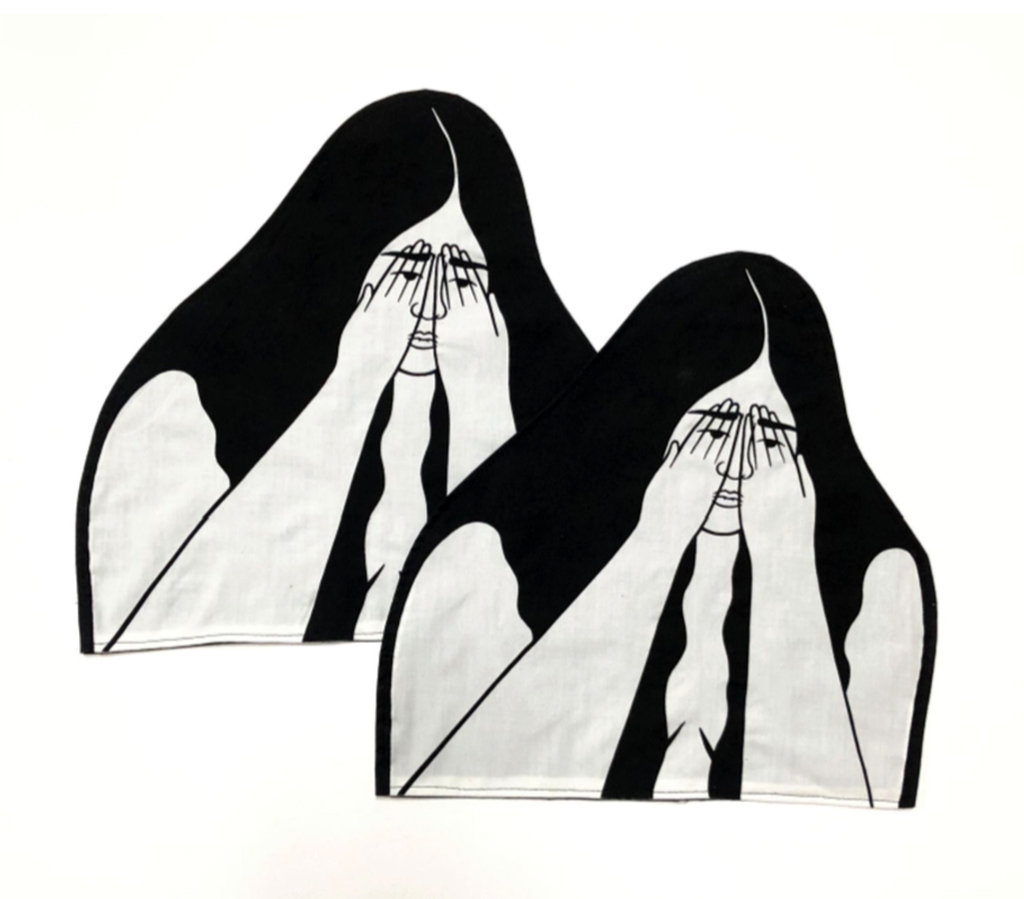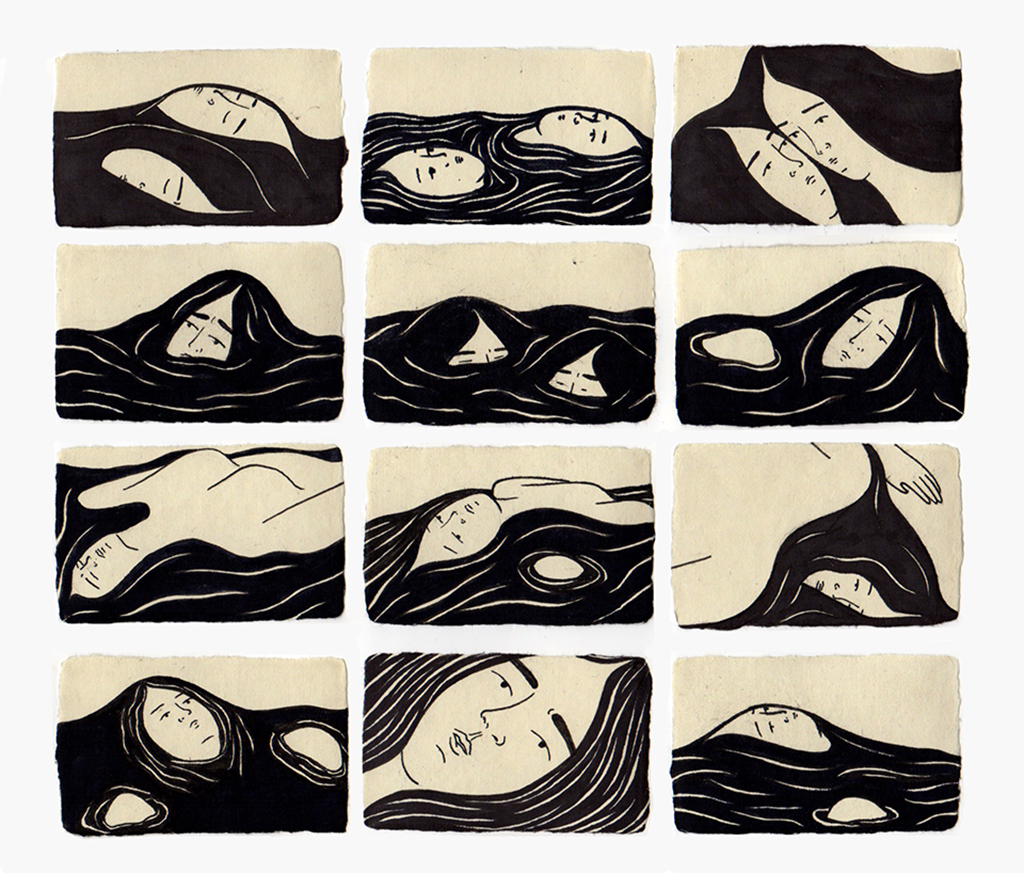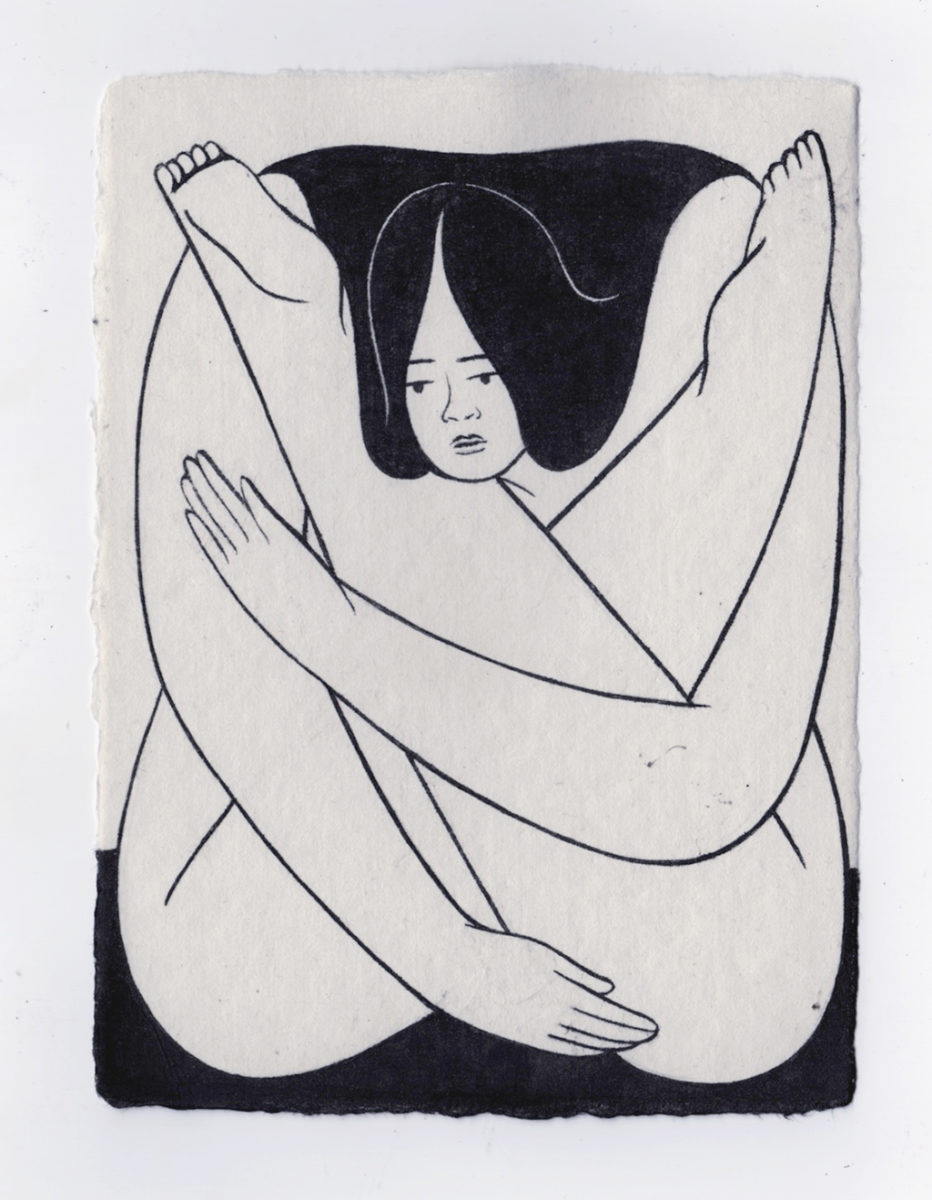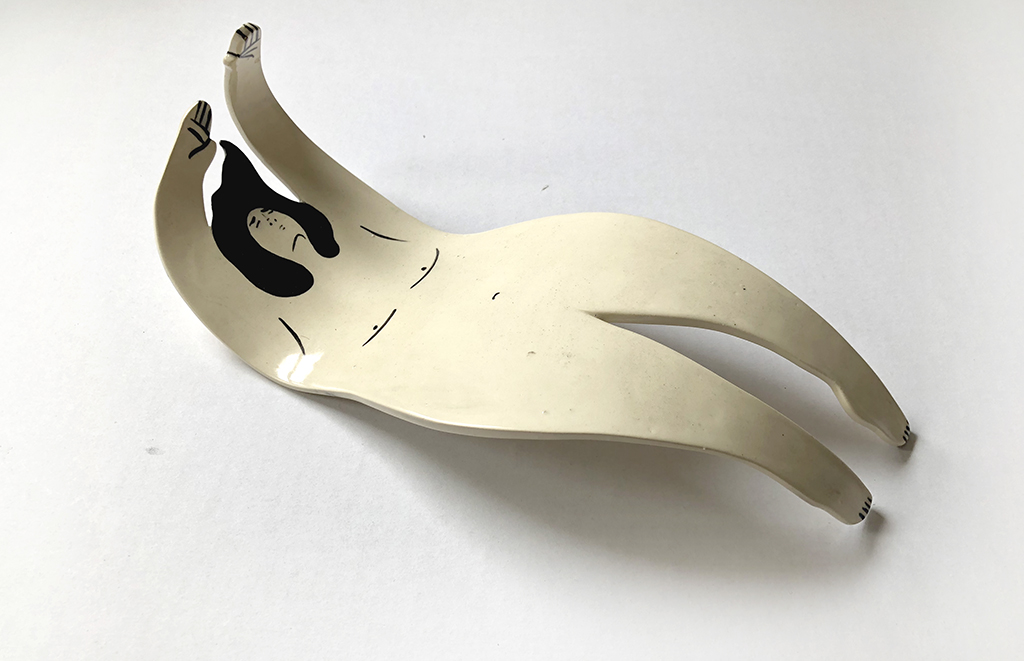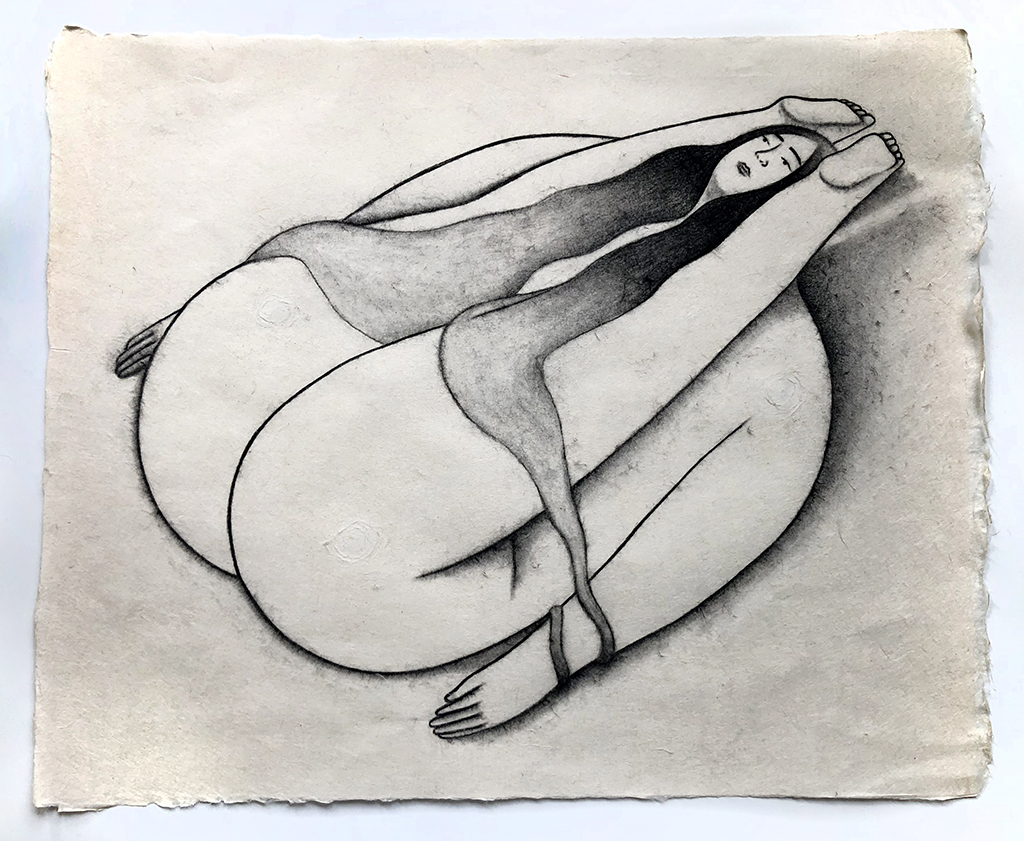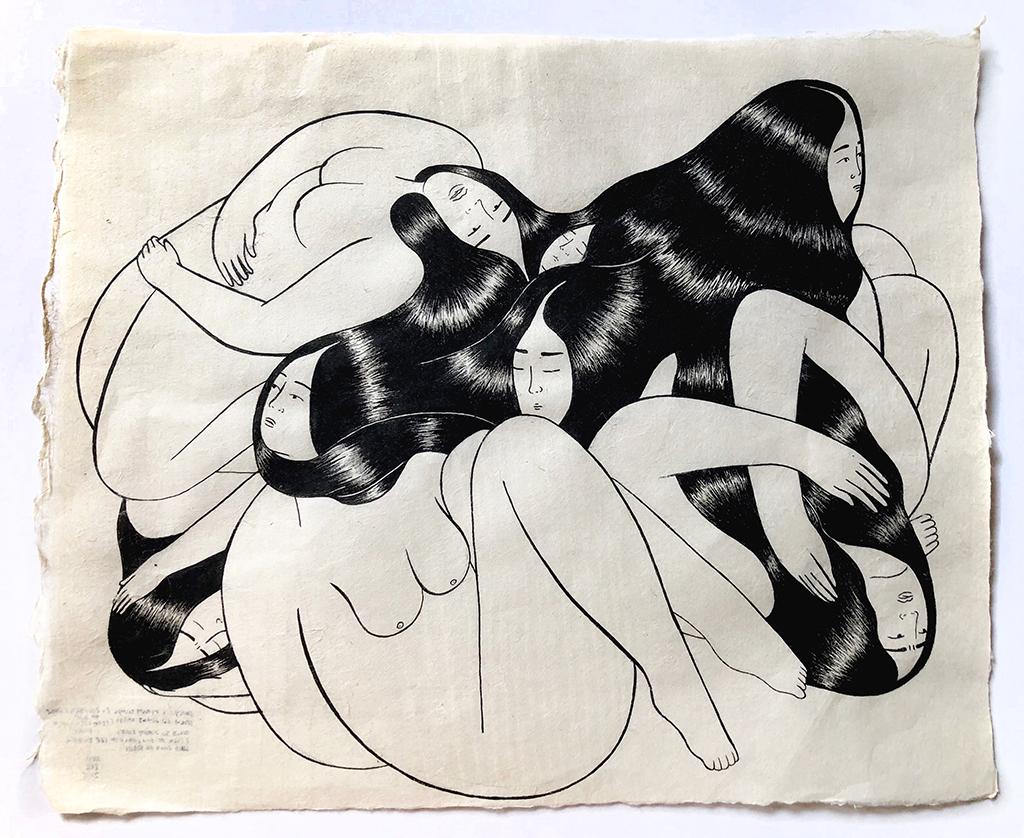
Ness Lee’s illustrations and ceramics often call to mind the warm cosiness of a cuddle, but there is something else at play too. Sometimes an overwhelming feeling of melancholy sits in her subjects’ eyes, and while many works depict tumbling groups of people, others feature a lone figure wrapping her limbs around herself.
“Looking back now, it started with trying to represent emotions on a page,” the artist tells me. “When I started to do these drawings, I was really trying to love myself and love my body. I began to explore feelings of sexuality and accepting myself as enough. Not quite fitting in or feeling part of much growing up, I think I really craved examples of what it can be to thrive and feel free. I gravitated towards affectionate embraces simply because I wanted to be held; I wanted to remember how affection can feel. I can see a lot of it came from growing up Hakka, with the confusion of East and Southeast Asian traditions, living in Canada, and understanding a different version of love and care that is not the westernized projection of affection.”
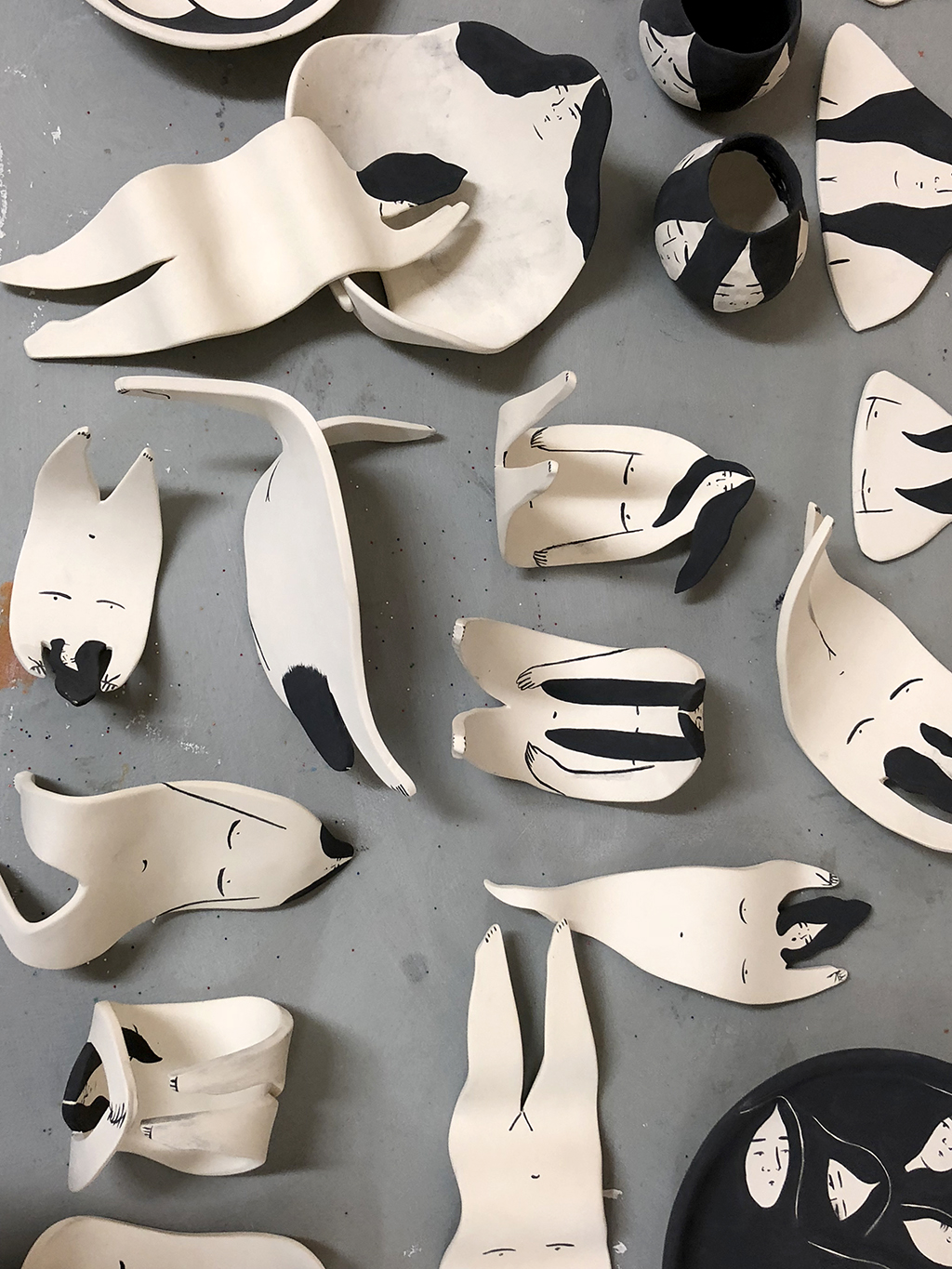
The artist’s monochrome works are gorgeously rendered, with simple thick black lines, inky flowing human hair, and bodies that seem to bend and twist in spite of their natural physiology. They capture what it means to connect with a human body, whether your own or someone else’s, and have a sense of exploration about them, moving in unexpected ways to find some new kind of closeness.
“I now understand I was experiencing varying levels of body dysmorphia,” Lee tells me. “I couldn’t quite grasp the body I was in and I didn’t really understand the ideals that were being presented in the media: what a beautiful body was; why was it always thin; ideas of gender binaries. I felt my body fluctuate often, which I feel furthered my thinking on what closeness really is, and how physicality can be a feeling and can leave a mark on you.”
“When I started to do these drawings, I was really trying to love myself and love my body”
Lee has been inspired by Shunga (Japanese erotic art) since receiving a book on the subject in the years after she graduated. This can be seen not only in the contortion of the bodies she depicts, but also in the clean shapes and modest use of lines to create evocative forms and faces. “I was so taken by the simplicity of the lines and the way everything flowed, as well the simplicity in expression,” she says. “I also really loved the sensuality. It illustrated a world that seemed very tender and loving to me at the time.”
The works are sensitive to the internal human state, connecting with raw emotions and our natural need for closeness. “I often feel like we live in a world where sadness, vulnerability and feelings are seen as weaknesses. I see these things as such incredible and resilient strength,” she says. “To actively live that way and practice considerate, caring behaviour is something I am trying to manifest and make a reality. I think I am growing more and more conscious of how much whiteness is conditioned in our ways of living and how much is done to each other in the refusal of understanding the pain and oppression of others.”



